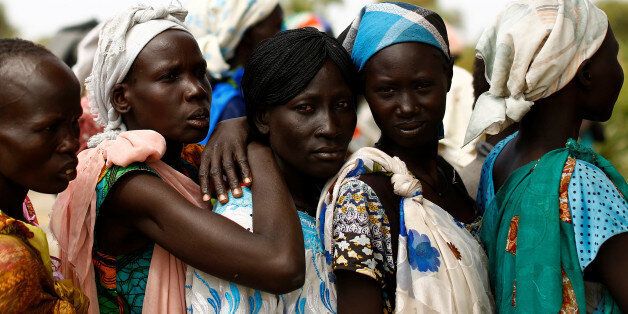
As we approach Easter, it's easy to look around and find a rather bleak, even devastating, picture of the world. There's famine in East Africa, with 16 million people on the brink of starvation and 22 million in need of humanitarian assistance to survive. The British public have been incredibly generous in their response but without even more funding, people are at risk of dying from hunger.
Then there's the rising number of refugees crossing the Mediterranean, reminding us how desperate the situations are in parts of the world - where parents are so afraid they and their children undertake the perilous journey across sea rather than stay on land. Packed together on tiny, ramshackle boats - unsure if they'll make it to the other side, and what welcome will greet them even if they do - it's impossible to imagine the suffering these people have seen as their countries are ripped apart by conflict.
One such example, of course, is Syria, where the civil war has now entered its seventh year. Millions of innocent people have lost their homes and many thousands have lost their lives. While the international community has provided billions of pounds of life-saving aid, peace and an end to the crisis remain painfully elusive for the families caught up in seemingly unending violence.
With that sombre backdrop we head into the Easter weekend, and it's worth asking what message the life, death and resurrection of Jesus has that is relevant to the current state of the world.
Jesus was crucified on Good Friday, on a small hill outside the city gates of Jerusalem. For his friends, family and disciples, who watched him die the most excruciating and humiliating death, that day was a devastating blow to everything they had come to hope in.
And if Good Friday brought active suffering in the form of the cross, then the following day was one of deep uncertainty and fear. The Messiah had been killed. There was no comfort to be found by his followers. They thought the story ended there. But it didn't.
In 2017, in a world abundant with problems, Easter brings hope not just because the Easter story ends with triumph as Jesus defeats death, but also because of where it starts.
It doesn't pretend that the world is perfect, nor that suffering is about to disappear in the near future. But it does offer the promise that light will in the end defeat darkness.
In light of the suffering of 65 million people who are displaced today due to persecution and conflict, I find it interesting that the last conversation recorded of Jesus in the Gospel of John is his call to his disciples to "feed his sheep".
After Christ conquered death in a way that we could not, he asked his followers then, as now, to do something about the needs around them. Then, as now, many of those needs can seem insurmountable. 16 million people on the edge of starvation across Somalia, South Sudan, Kenya and Ethiopia can be an overwhelming figure. Then there's the 30 million displaced children around the world who have no school to go to, and 5.8 million children inside Syria alone who need urgent protection.
Yet Jesus doesn't reprimand his disciples for not having fully fixed every problem, but rather asks them to care about the patch of darkness that is within their reach.
